Counterfeiting is a format that has always followed the antiques industry and is a challenging roadblock for the antiques industry.
There are mainly extreme imitation, high imitation, medium imitation, low imitation, land distribution and garbage.
Engaging in this business must inevitably understand the “four states”, otherwise it is really impossible to play.
Antique porcelain, i.e. imitating its glaze, imitating its shape, imitating its decoration or both,
It is a craft phenomenon with distinctive characteristics of times in ancient Chinese porcelain.
There are a large number of people in both the folk and the official, so antique porcelain survives a lot.
It mainly sprouted in the Song Dynasty, formed in the Yuan Dynasty, matured in the Ming Dynasty, prospered in the early Qing Dynasty, and declined in the late Qing Dynasty.
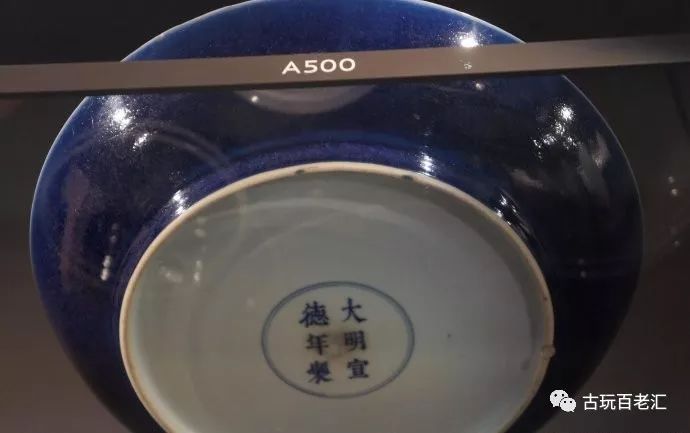
Qing Dynasty Yongzheng Imitation Xuande Blue Glaze Plate
For example, the entry of antique porcelain in “Basic Knowledge of Ancient Chinese Porcelain” said: “Porcelain that was fired in the late period to imitate the famous porcelain varieties of the previous period is called antique porcelain. The style of antique was very popular as early as the Song Dynasty, when it appeared A large number of imitations of Shang Zhou bronzes, and some local porcelain kilns are not lack of deliberate antiques. “
Another example is the entry of antique porcelain in “Chinese Ancient Porcelain Appreciation Dictionary”. Antique porcelain is “porcelain fired after bronze, pottery, porcelain, and lacquer from the Occupation or later dynasty. Antique porcelain has prevailed in the Song Dynasty …”
In fact, ancient Chinese antique porcelain refers to the kind of ancient Chinese porcelain in the development process,
In a period of porcelain, there are products that imitate the porcelain craftsmanship before this period.
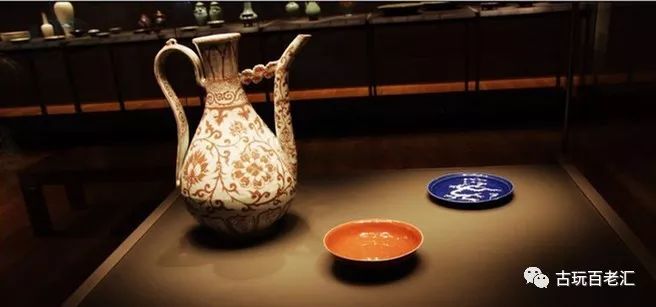
Historical conditions for the appearance of antique porcelain
This is an important reason for the emergence of antique porcelain.
During the Tang, Song, Ming, and Qing dynasties, which porcelain was handed down was rare and expensive.
All rare cultural relics are expensive;
The less porcelain that is handed down, the higher its value.
In order to make huge profits, people imitate.

Ming Xuande imitation ru glaze cricket jar
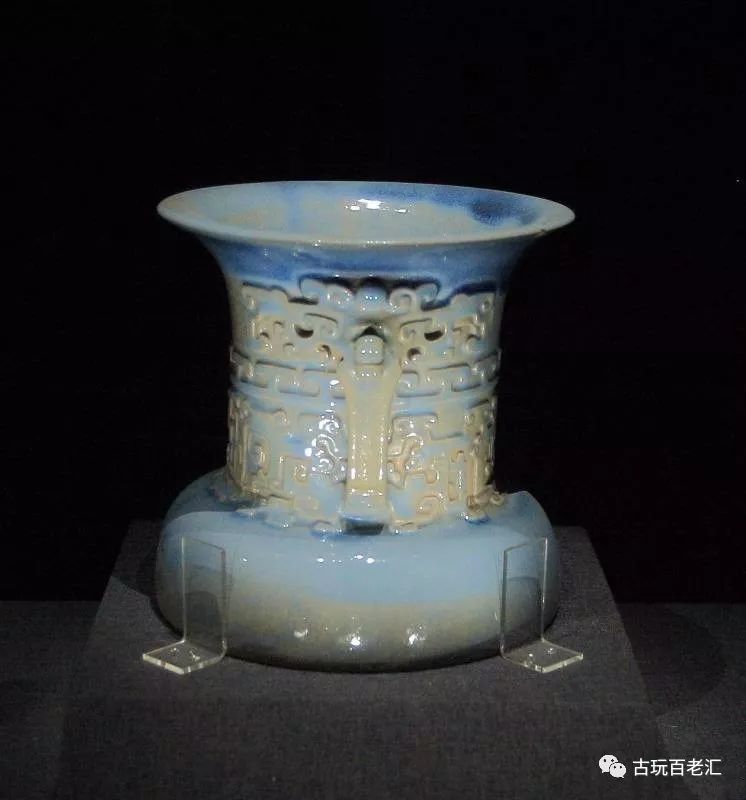
Ming Yixing Kiln Antique Copper Pattern
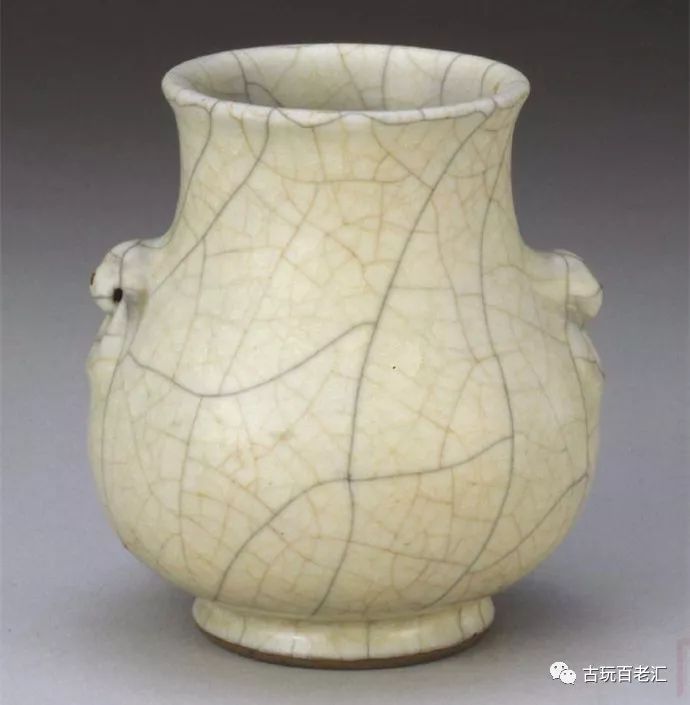
Ming imitation official glaze shop first ear statue-Beijing Forbidden City
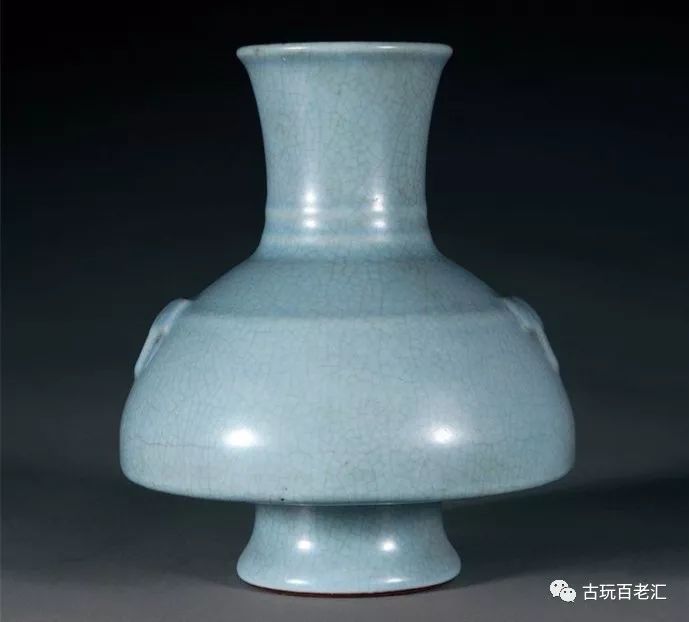
Qing Dynasty Emperor Yongzheng imitation ruglas like ear-stringed bottle-Beijing Forbidden City
Collectors of all generations and cultural calligraphers left many notes while studying and appreciating ceramics,
This also played a role in the emergence of antique porcelain.
As noted in the Ming Dynasty notes, a pair of Chenghua Dou Cai chicken cups in the Shenzong Yu case was worth a hundred thousand at that time.
Although the text of this record is simple, it shows the fact that it is imitated into a fighting color chicken cup.
The Ming Dynasty documents recorded Shen Defu’s “Duo Xuan Xuan Yu”, Wang Shizhen’s “Goblin”, Zhang Yingwen’s “Qing Mi Zang”, Xie Zhaobu’s “Five Miscellaneous Items”, Tian Yiheng’s “Leaving Youth”
There are also many records in the literature of the Qing Dynasty, and the porcelains of the Yongle, Xuande, Chenghua, Jiajing and other periods of the Ming and Ming dynasties were evaluated.
These comments have a great influence on antique cultural relics. There have been works of imitation Yongle, Xuande, and Chenghua dynasties. There are a large number of them, and these imitations are collected in major museums around the world.

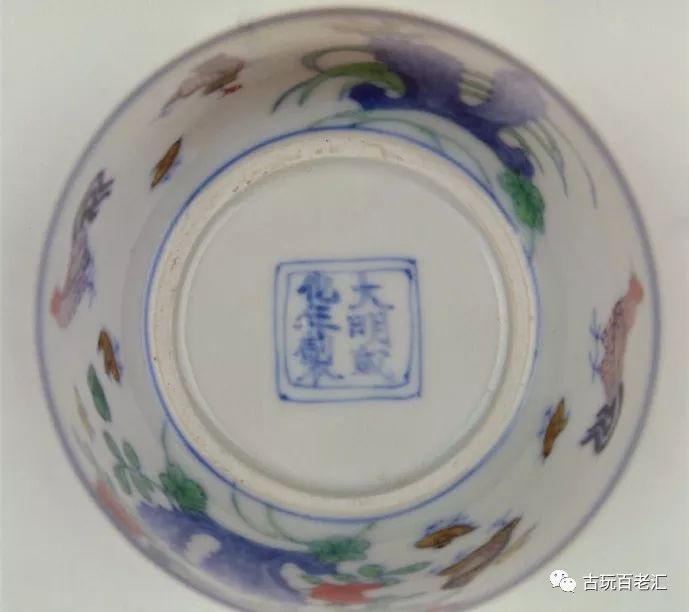
Mingchenghua Dou Cai Chicken Bowl Cup-Beijing Forbidden City
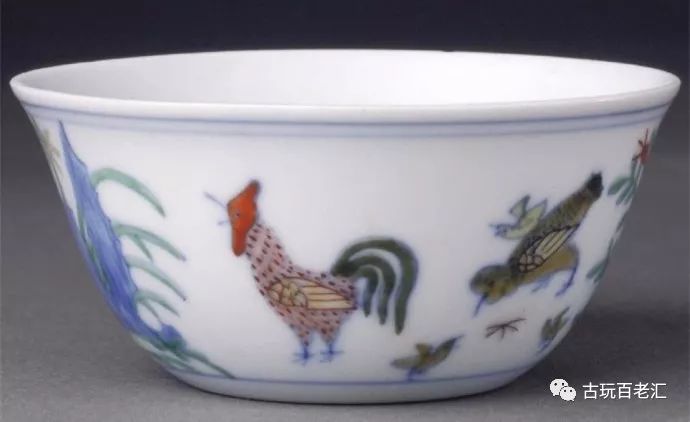
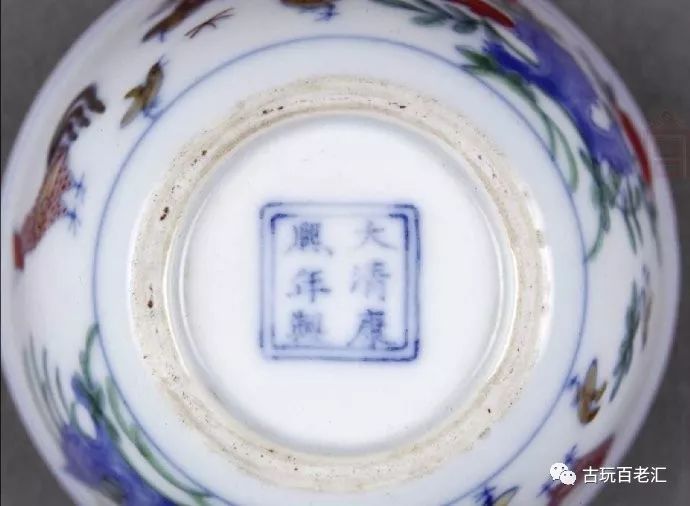
Qing Emperor Kangxi’s imitation Chenghua bucket chicken bowl-Beijing Forbidden City
Emperors Song Huizong, Yongle and Xuande of the Ming Dynasty, Emperors Kangxi, Yongzhi, and Qianlong of the Qing Dynasty were very fond of cultural relics, and they made an effort to form an atmosphere.
In order to cater to this trend, a large number of imitation bronzes, and porcelain are no exception. Many of the works of the five famous kilns are imitations of the Han Dynasty.
In this way, the craftsmanship of porcelain was promoted from the original general arts and crafts to high-end playful goods.
Especially during the Ming and Qing Dynasties, several emperors attached great importance to the production of porcelain, which enhanced the enjoyment of porcelain.
To a certain extent, imitation-porcelain porcelain was produced in the play of “the ancient kiln porcelain can be reproduced today”.
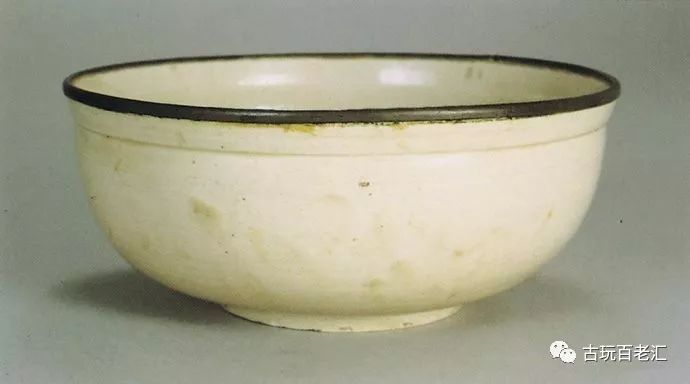

Dingyao Dingyao Fish Bowl
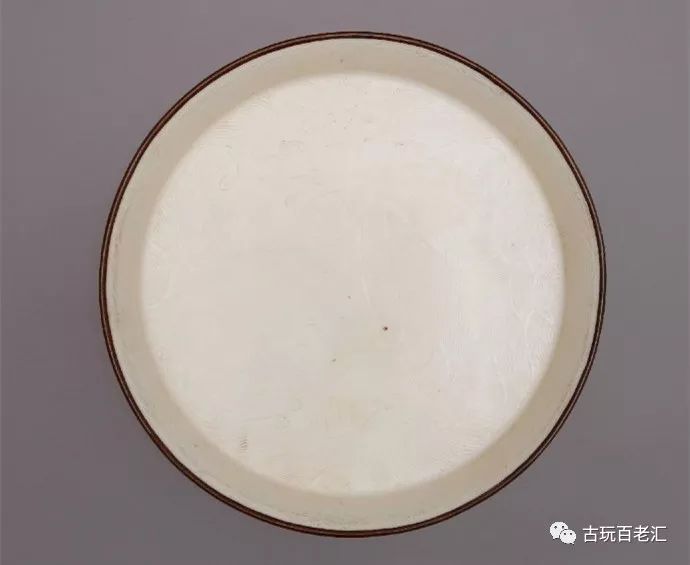
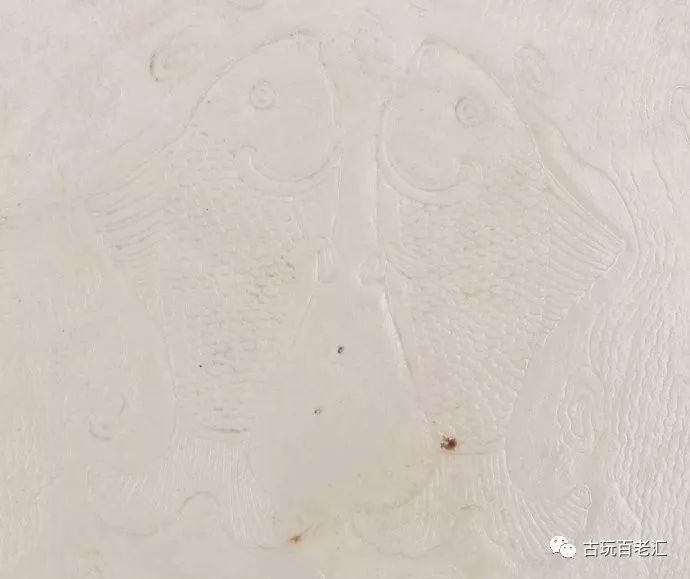

Qing Dynasty Kangxi imitation Ding kiln with white glaze and seawater double fish pattern folding and washing-Beijing Forbidden City
In the late 19th century, many countries most looted cultural relics.
Yingtong collected celadon and Qin Sancai of all dynasties;
France collects enamel flowers and Lang Yaohong;
Japan collected Tang Sancai, Song, Yuancizhou kilns and Jiajing and Wanli colorful.
Because of the special hobby of these ceramics in these countries, and the limited number of porcelains handed down from generation to generation, they are suitable for them and are widely copied.
In the 1930s, the United Kingdom published two large volumes of “Kangxisu Three Colors Catalogue”, among which there were three large bottles of yellow, green, purple and black, many in a set of 5 pieces. It was not available in the Kangxi period. It was fired in large quantities to meet the needs of Britain during the Republic of China.
There are many imitations of enamel and Langyaohong (called cow blood red in France), which were also imitations in the Republic of China, and their imitations are available in many foreign museums.
Japan likes the products of the Cizhou kiln in the Song Dynasty. It has been acquired in large quantities since the first half of the 20th century. To this day, the collection of Cizhou kiln boutiques is second to none in the world, but some of them are the works of imitation kiln kilns.
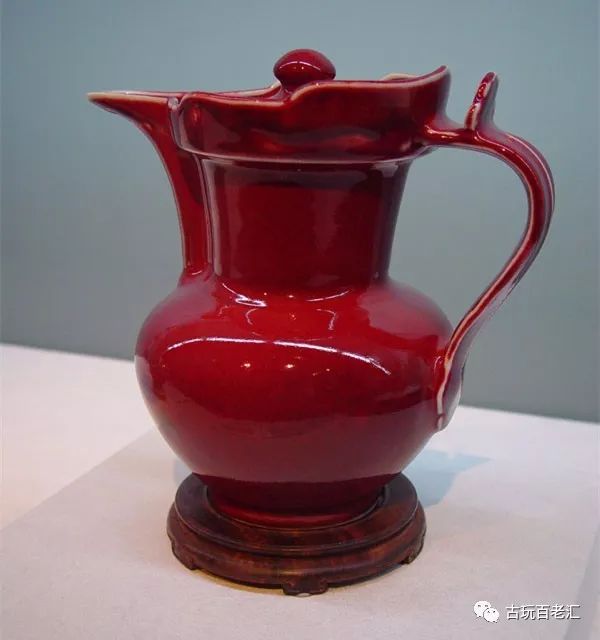
Ming Xuande Ruby Red Monk Hat Pot-Taipei Forbidden City

Kangxi in Qing Dynasty-Yongzheng imitation of Xuande ruby red enamel hat pot

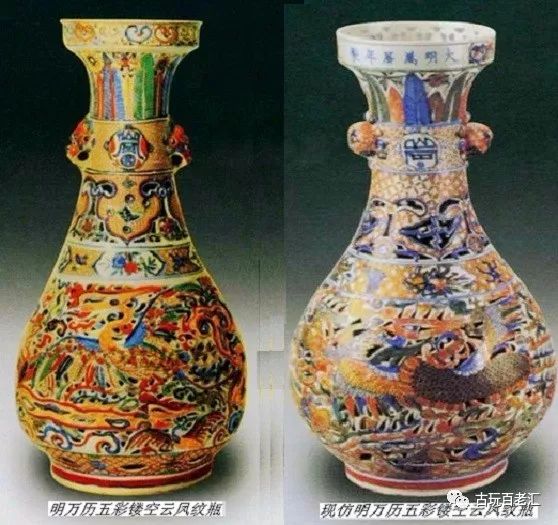
The development of the commodity economy and the emergence of capitalism have provided the following conditions for the production of antique porcelain: First, the demand for profit has stimulated the rapid development of folk kilns,
Improve the level of porcelain kiln production technology, forming a “government and civilian competition” situation, so that the production of antique porcelain can be successfully completed;
Secondly, the establishment of the official kiln and the imperial kiln enables antique porcelain to be produced under the conditions of fine division of labor and strong professionalism, and the antique porcelain can be realistic and sophisticated;
The third is the formation of the market, which has allowed antique porcelain to become commodities and imported into the tide of the commodity economy, thus stimulating the enthusiasm of porcelain artisans to produce imitation-occupied porcelain.
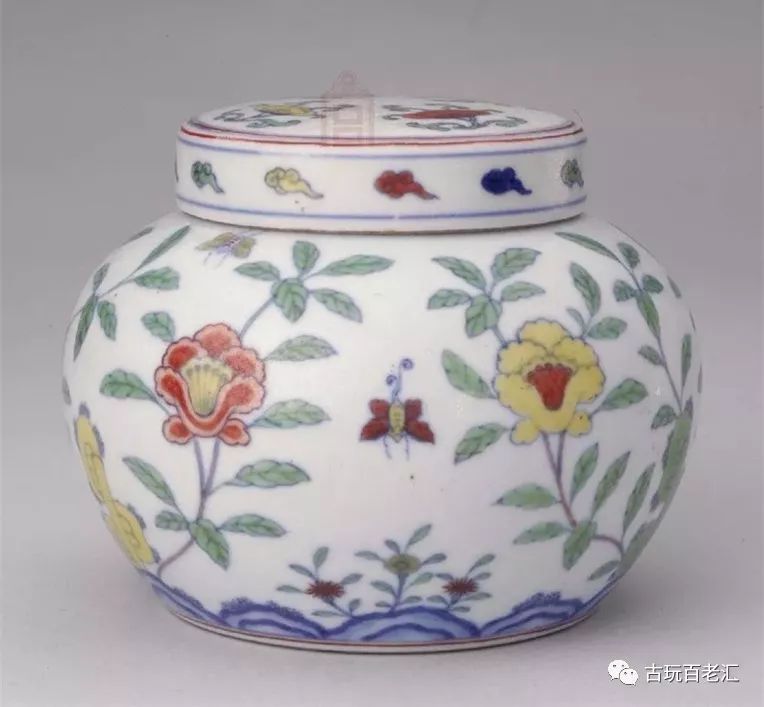
Qing Dynasty Emperor Kangxi’s Ming Dynasty Huacai Dou Choi Shou stone flower pattern pot, Beijing Forbidden City

Qing Dynasty Yongzheng imitation Chenghua bucket color lid jar-Beijing Forbidden City
First, it originated from the admiration for certain ancient ceramics, which were faked because the authenticity was too few or difficult to obtain.
Most of these antique ceramics are official kiln products fired by the palace,
The craftsmanship is regular, the quality is excellent, and there are many innovations in the antique process.
There are two criteria for appraising this type of porcelain:
One is the characteristics of the imitation ceramics;
The second is the characteristics of imitation era ceramics.
As long as you grasp these two principles and compare them repeatedly, you can know their authenticity.
Another type of imitation is to make money.
Since the Yuan, Ming, and even modern times, many people are elegant and well-known kiln porcelain, and spare no expense to search deliberately.
The value of genuine products is increasing day by day, and supply exceeds demand.
So some good people gathered fake masters of famous masters or faked by famous masters.

90-year-old imitation red Junyao Taibaizun and bowl
The most popular style of antique forgery was in the late Qing and early Republic of China.
Antique artifacts are mainly famous kilns in Song, Yuan, Ming and Qing Dynasties.
The more famous the porcelain in the kiln, the more common the imitations and the greater the market demand.
Common antique and falsified ceramic varieties are:
Tang Sancai, Yaozhou kiln, Ding kiln, Jun kiln, Longquan kiln, celadon porcelain of Jingdezhen in Song and Yuan Dynasties,
Yuan, Ming blue and white, Ming and Qing kiln colored porcelain, Kang, Yong, dry blue and white, Jizhou kiln brown porcelain,
Song Jianyao black porcelain, Mingdehua white porcelain, etc.
The counterfeiting of ceramics is different from ceramic antiques, which are essentially different in method and purpose.
Although forgery also needs to be antique, it is often shameful for people because it is good enough to be faked and rough to be fined in order to deceive people’s money.


The methods of Chinese antique porcelain include: imitation utensils, imitation modeling, imitation glaze, imitation decoration, imitation models.
That is all aspects of imitation artifacts.
This kind of imitation not only needs to imitate the simple effects of imitation type, glaze, decoration and style,
And imitate the coordination effect between them, that is, the overall spirit of the whole utensil,
In order to make the imitator fully realistic.
Imitation utensils are the most common form of expression in antique porcelain,
Its imitation objects are generally those prestigious products in ancient Chinese porcelain.
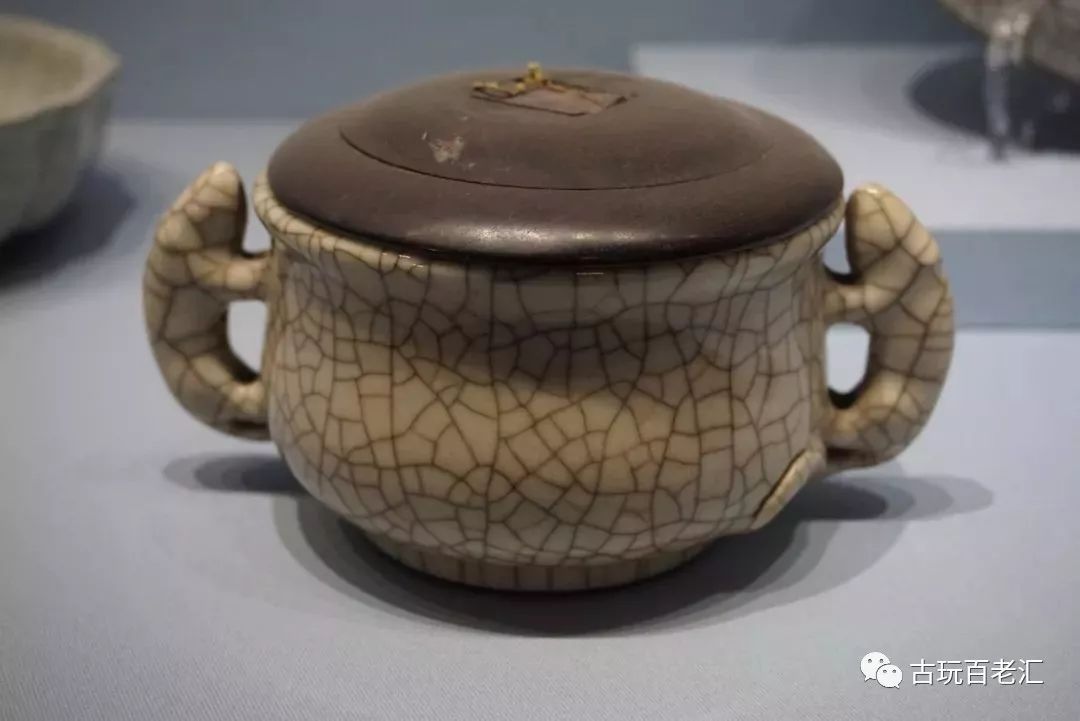
Qing · Yongzheng imitation brother glaze binaural stove
Such as the products of the five famous kilns in the Song Dynasty (Ru kiln, official kiln, Ge kiln, Ding kiln, Jun kiln),
Blue and white porcelain during the Yongle and Xuande periods in the Ming Dynasty, and bucket-colored porcelain during the Ming Dynasty’s Chenghua period.
Since most of these famous kiln porcelains were historically supplied to the royal court,
Therefore, the raw materials are excellent, the technology is excellent, and the production is exquisite,
It is a classic work that represents the superb technology of ancient China’s porcelain making technology, and has always been favored by the royal and public.
Therefore, the later courts tried to imitate these products,
Not only to show off the superb level of porcelain making in this period, but also to reproduce self-playfulness through imitation,
It reflects the elegant taste in spiritual life.
In the private sector, copycats took advantage of the development of the commodity economy, the burning of official products and the relaxation of the official kiln system,
It also imitates the famous kiln porcelain in history, so as to confuse the world and make private gains.
The products of ancient imitation kiln porcelain that have been handed down to this day can be seen in both official kilns and civilian kilns.
It is reflecting this historical phenomenon.
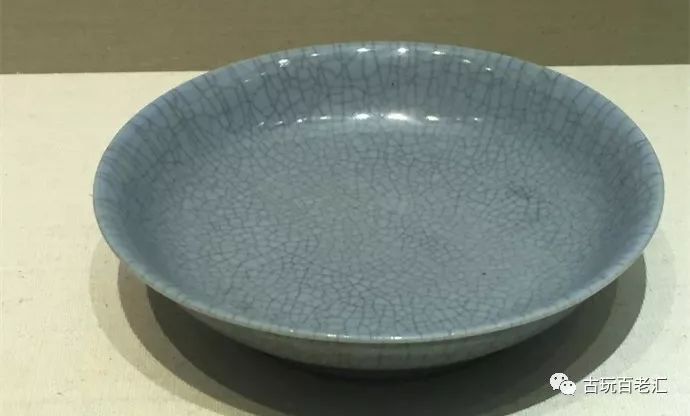
Ming Xuande imitation ru glaze plate

Qing imitation official kiln celadon vase-British National Museum
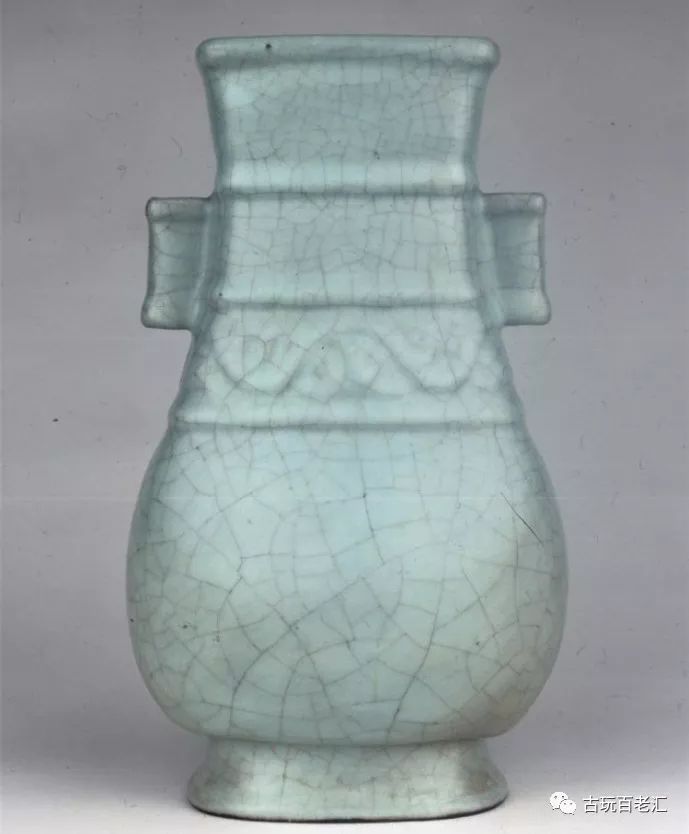
Qing imitation official kiln pierced ear pot-British David Foundation

Modern imitation carved flower set kiln bottle
That is, the shape of the original artifact.
Modeling is an important factor in the composition of porcelain, it is the embodiment of the performance of the carcass, and it is also the stage where the glaze color technology is displayed.
However, since China’s imitation products are restricted by two aspects, there have been very few people who have really been confirmed for a long time.
The two aspects are:
First, imitation modeling must imitate glaze, simple imitation modeling is difficult to succeed;
Second, imitation modeling is subject to the continuation of the form.
Because many shapes in ancient Chinese porcelain have been handed down from generation to generation, it lasts for a long time, and it is difficult to find imitation shaped objects in these shapes.
Therefore, antique porcelain generally imitates the historically unique, rare, and non-continuing products.
For example, the string bell box of the Tang Dynasty was a relatively unique product at that time, and it was very rare since the Tang Dynasty.
It was only in Jiajing in the Ming Dynasty that such shapes were seen in blue and white porcelain.
Therefore, Jiajing blue and white string box must be an imitation of the shape of the Tang Dynasty string box.

Tang Dynasty? Bell box
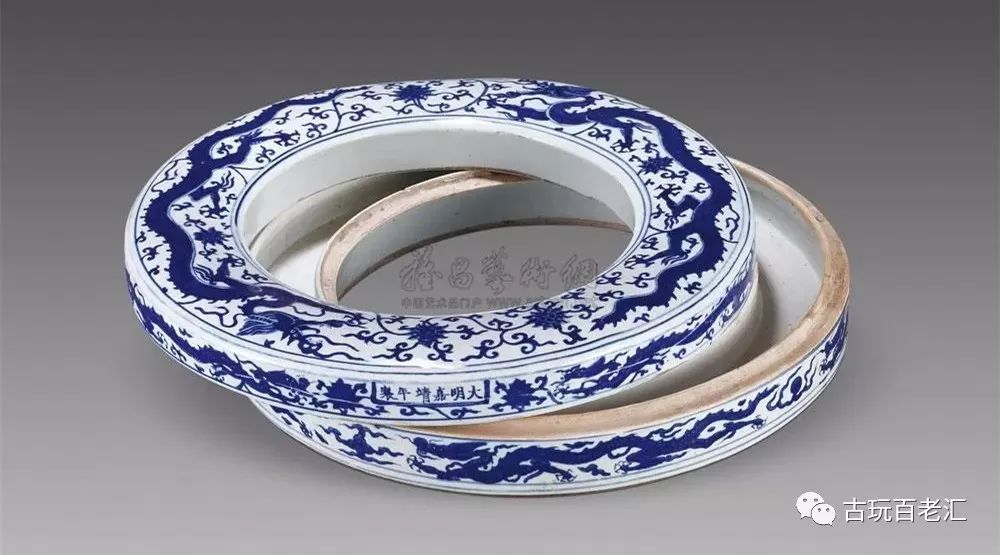
Ming and Jing Jing Blue and White Shuanglong Opera Bead String Box
It is the glaze and color decoration of imitation utensils.
Glaze is the external decoration of porcelain. Compared with the shape of porcelain, it has a certain flexibility.
Once the shape is formed, it is often connected with the function of the utensils, so it becomes a fixed mode, so that the copyists can not avoid it;
The glaze can choose any object as its performance object.
It is precisely because of this factor that the phenomenon of the specific glaze decoration on the porcelain of the previous period appeared on ancient Chinese porcelain.
Porcelain such as Ru kiln, official kiln, and brother kiln in the Song Dynasty did not win by modeling, but were famous for their glaze decoration.
In the Ming and Qing Dynasties, when admiring it, Song Ru glaze, official glaze and brother glaze were applied to the utensils of this era.
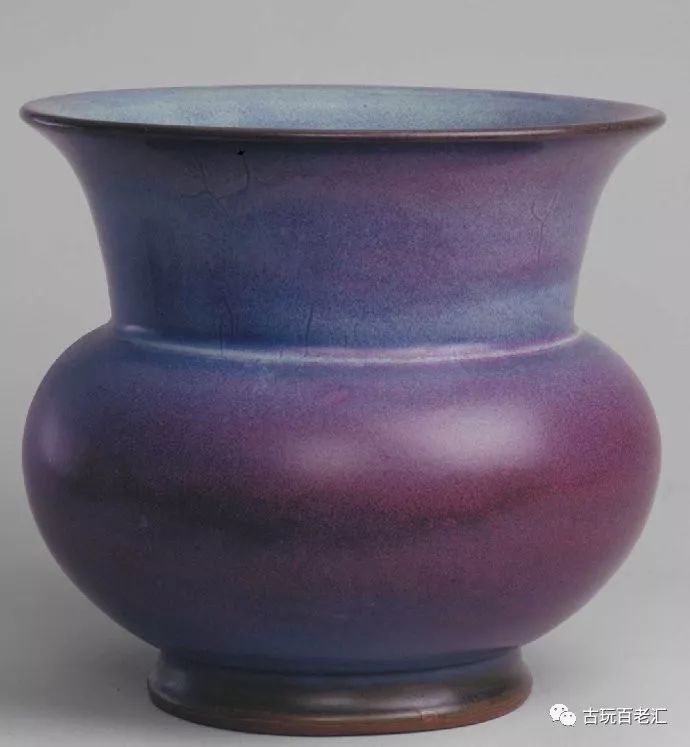
Song Junyao Rose Purple Glaze-Beijing Forbidden City
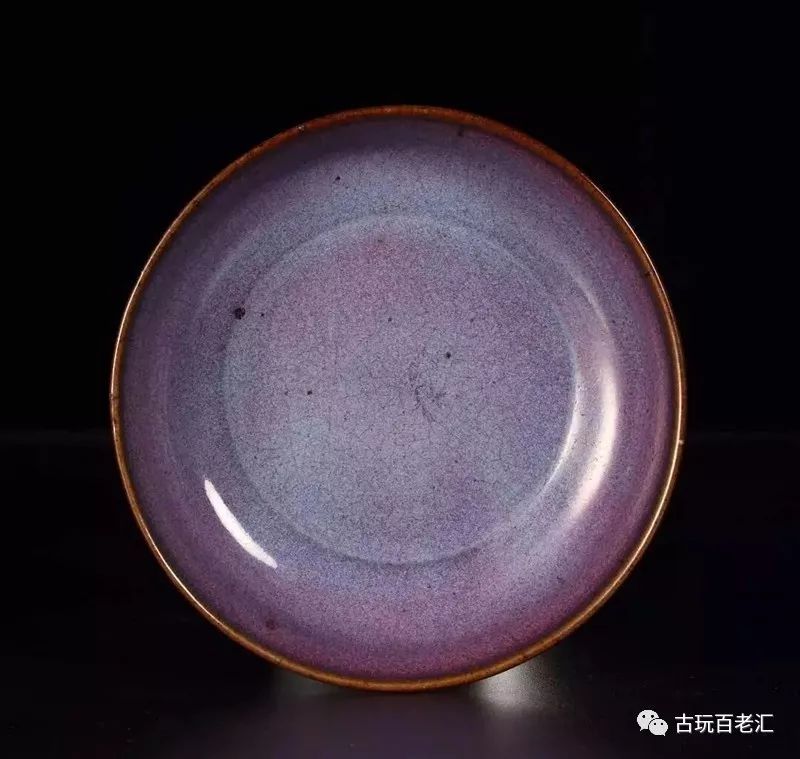
Ming Yongle-Xuande Jun Kiln Plate

Qing Emperor Yongzheng’s imitation ruglas Ruyi ear bottle-Beijing Forbidden City
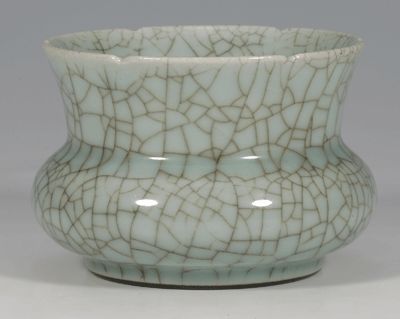
Qing Yongzheng imitation official glaze flower mouth respect
That is to imitate the decorative image of utensils.
The characteristics of this type of antique porcelain are similar to the characteristics of the aforementioned imitation shaped utensils.
The main manifestation is that the number of products is small, and the imitation characteristics are not very clear, but they do exist.
The ornaments on the blue and red seahorse galloping bowl made by the Qing Dynasty,
It is made by imitating the decoration on the blue and white seahorse running bowl of Ming Wanli.

Ming Wanli blue and white seahorse pattern lid box

Qinghai blue and white glaze red seahorse dish
That is, the imitation on the imitation artifact, or the handwriting of the imitation artifact.
This kind of antique porcelain refers to pure imitation products, and does not include products that imitate the entire appearance of the objects and at the same time imitation models.
For example, many products in the Kangxi porcelain of the Qing Dynasty originally had the appearance of Kangxi porcelain.
However, due to the imitation or random writing of the Ming Dynasty Xuande, Chenghua, Jiajing, etc.,
Reflects the admiration for the Ming Dynasty kiln porcelain.
Generally speaking, it is not a kind of imitation to write money at will;
However, due to the content of the book knowledge, it is easy to create an illusion,
To make people unfamiliar with ancient Chinese porcelain mistakenly believe that these utensils are Ming dynasty products,
Therefore it is still included in this item.
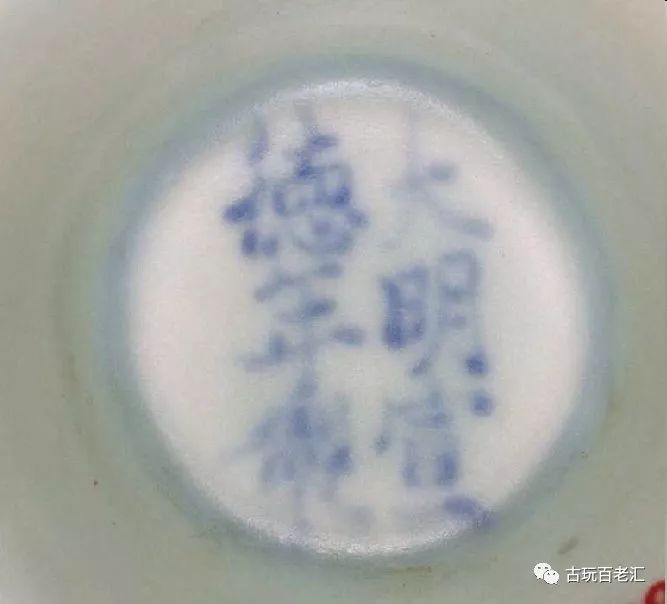
Ming Wanli imitates Xuande
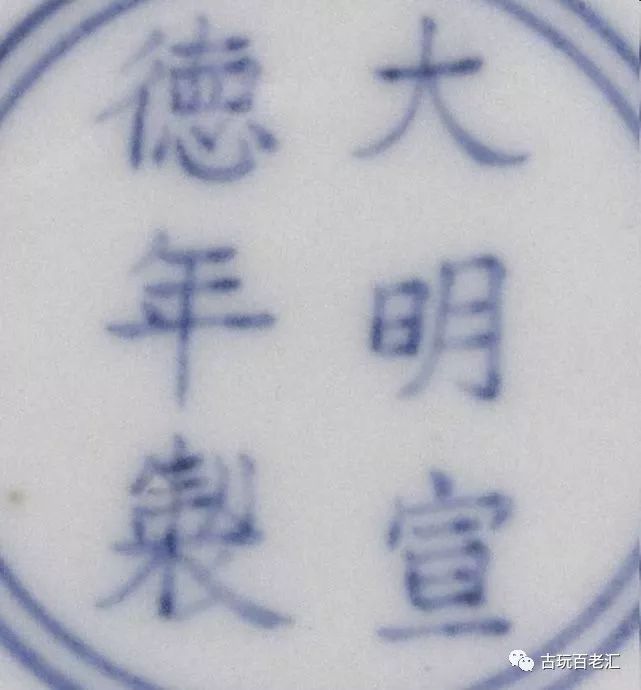
Ming Zhengde imitates Xuande’s knowledge
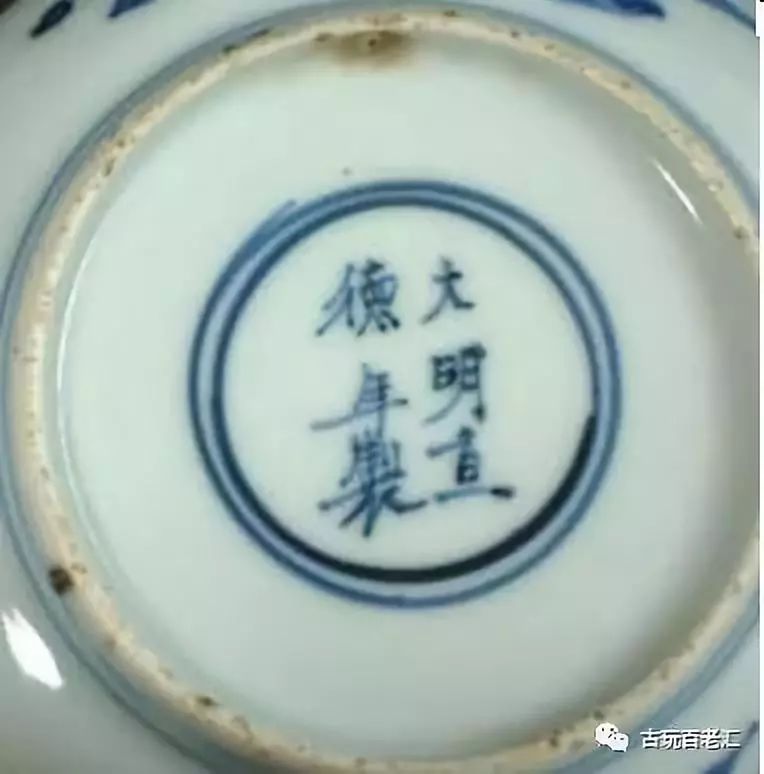
Imitation of Xuande’s knowledge in the late Ming Dynasty

Qing Emperor Kangxi’s Ming Xuande
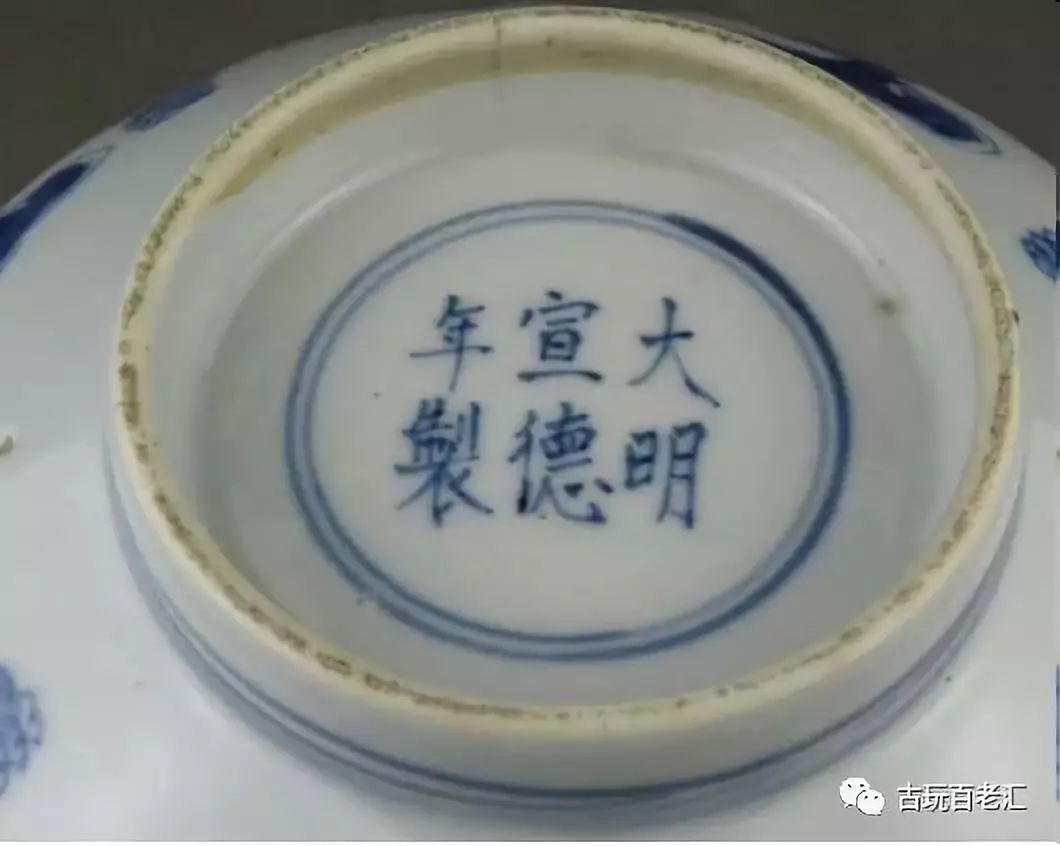
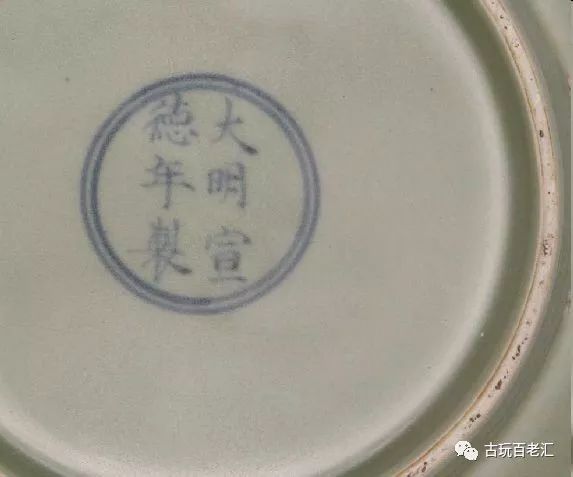
Yongzheng imitation of Xuande porcelain

Xuande imitation in the late Qing Dynasty
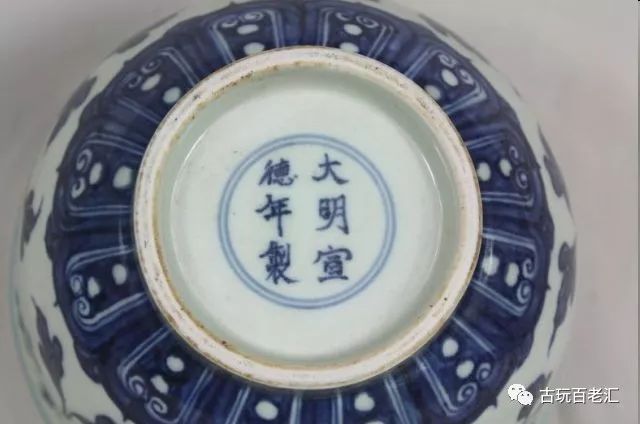
Modern imitation Xuande
In fact, imitation is not just antique porcelain,
Antique bronze, antique jade, antique calligraphy and painting, antique textiles and other antique crafts,
It has always been a field of technology that people in the industry continue to explore and research.

